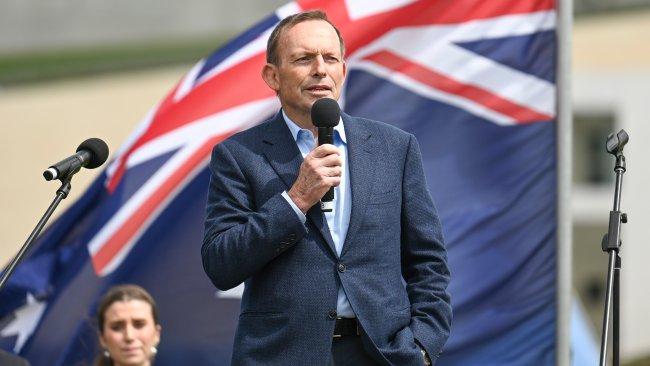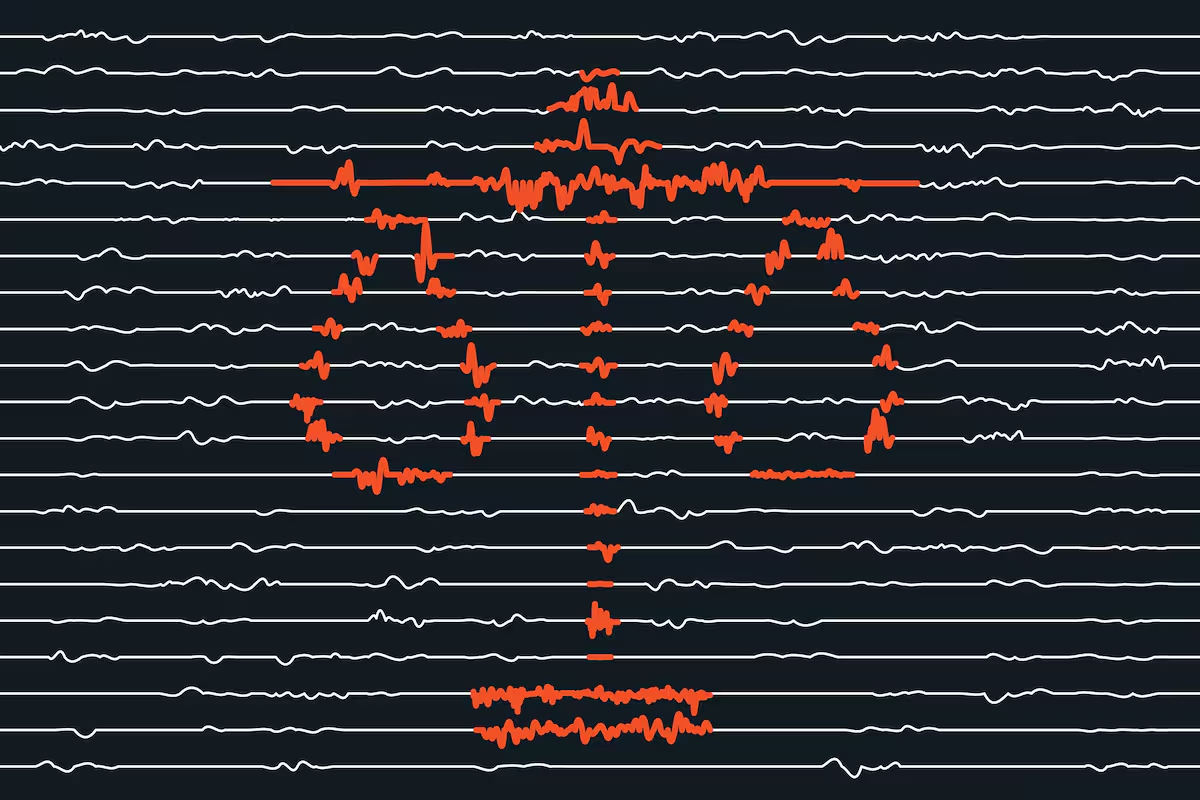
Peter Goodman: His Start-Up May Not Survive Trump’s Tariffs
A sourdough baker turned entrepreneur in North Carolina has delayed his new product as he contemplates the prospect that higher costs will doom his company.…
Thought Leader: Peter Goodman

“Men learn from history only how to make new mistakes.” That line by the great English historian A.J.P. Taylor once very much depressed me. In 1981, I applied to study modern history at Oxford precisely to learn lessons from the past. It was rather crushing to be advised by a scholar whom I idolized that this was a futile enterprise.
Taylor was only half right. Yes, most of those policymakers who purport to be learning from history are doing so in such a slapdash way that they are almost guaranteed to make new mistakes. A good illustration of this was the jumble of terrible historical analogies bandied about between the 9/11 terrorist attacks and the invasion of Iraq. Nevertheless, by applying historical knowledge rigorously to contemporary problems, we can do better. The devil is in the details of how exactly one goes about this.
Looking back over more than a dozen years of trying to learn from history for a living, I offer the following eight lessons. Disclaimer: While I use more than the usual number of first-person pronouns below, it’s hard to avoid when trying to assess how effective my use of history has been. I’m as interested in what I got wrong as what I got right.
Lesson 1: We have passed from the “foothills” to the “mountain passes” of Cold War II.
At Bloomberg’s New Economy Forum in Beijing in November 2019, I asked Henry Kissinger the question: “Are we in a new Cold War, this time with China?” His reply is justly famous: “We are in the foothills of a cold war.” The following year, he raised that to “mountain passes” of a cold war. In an interview we did in late 2022, he went even further, telling me that the second cold war would be even more dangerous than the first.
For me, this was vindication. After all, who was better qualified to recognize a cold war than Henry Kissinger, who had spent eight years orchestrating the US policy of détente with the Soviet Union? And who was less likely to overstate the deterioration of US-China relations? After all, one of his greatest historic achievements had been to begin the process of establishing diplomatic communications between Washington and the People’s Republic.
Today, the idea of Cold War II is fast becoming conventional wisdom. David Sanger of the New York Times has a new book out with the title New Cold Wars. The first part of Dmitri Alperovitch’s World on the Brink is “Cold War II, a New Era.” How did the lessons of history bring me so early to this party?
Insight came in a series of stages. The first was to understand the true nature of President Xi Jinping’s regime, and to see that his strategy for reasserting the dominance of the Chinese Communist Party over an increasingly unruly society would include the first overt assertion of Chinese economic and military power since the time of Mao. This was a sea change from Deng Xiaoping’s “hide your strength and bide your time.”
Stage 2 was to see in 2018 that President Donald Trump’s initial trade war against China was evolving into a tech war — and more. I vividly remember a world map highlighting which countries were buying Huawei’s 5G hardware and which had banned it precisely because it was so obviously a cold war map of two blocs, with a third group of non-aligned countries. Another epiphany was realizing with amazement that in 2018 China spent more money on imported semiconductors than on imported oil.
The escalation to full cold war was exemplified by Vice President Mike Pence’s remarkable speech to the Hudson Institute that October:
Beijing is employing a whole-of-government approach, using political, economic, and military tools, as well as propaganda, to advance its influence. … Chinese security agencies have masterminded the wholesale theft of American technology — including cutting-edge military blueprints. … China wants nothing less than to push the United States of America from the Western Pacific and attempt to prevent us from coming to the aid of our allies. But they will fail.
Stage 3 was the insight that this reaction against China was to be bipartisan — the exception that proved the rule of partisan polarization on every other issue.
This cold war, like the last one, is partly ideological, not least because Xi made it so by explicitly hailing a Marxist-Leninist “struggle for a new era” against corrupt Western notions such as the rule of law. Like the last cold war, the current one is also partly technological but extending beyond nuclear missiles and satellites to include hypersonic missiles, drone swarms, artificial intelligence and quantum computing.
It is economic, too, with two profoundly different economic systems competing over not only semiconductors but also solar cells, batteries and electric vehicles. The US floods the world in dollars; China floods the world in hardware.
And, like Cold War I, Cold War II is a classically geopolitical contest over particular territories and seas, notably Taiwan and the South China Sea, as well as the vast regions China sought to tie to Beijing with its One Belt One Road and “safe cities” surveillance initiatives.
Lesson 2: Politics > economics.
One reason that some were slow to discern the drift to a new cold war was that it seemed economically irrational from the point of view of a “Washington consensus” that for years had prioritized free trade, global capital flows and open borders, not to forget the wishful thought that greater economic integration between the US and China would magically lead to political liberalization in the latter.
The tendency to elevate economics above politics often leads pundits into error. An early example of this was the widespread belief that the European Monetary Union (EMU) would fall apart in the wake of the global financial crisis of 2008-09, especially when it became apparent that the Greeks had been egregiously understating their public-sector deficit. I was emotionally attracted to the breakup of the euro area, as I had been against the idea of monetary union in the 1990s. Part of me wanted the euro to blow up just for me to be right. But that wasn’t the right call.
However sub-optimal EMU might be as a currency area, it still made political sense for both the Germans and the countries on the periphery because the former got a weaker exchange rate than they would otherwise have had, and the latter got lower interest rates. If the Germans went back to the mark, their country would become Switzerland; if the Greeks went back to the drachma, they would become Argentina. Voters would not enjoy these outcomes.
Thus, when the German Minister of Finance Wolfgang Schaüble declared, “The euro zone can survive a Greek exit,” it seemed clear he was either bluffing or holding an erroneous view that he would soon have to abandon.
Conversely, I understood from an early stage that economic interdependence between the US and China would not prevent a drift toward cold war. If anything, it was asymmetric interdependence that led to Cold War II. China’s share of the total US trade deficit peaked at 48% in 2015. It wasn’t hard to understand why sentiment toward China began to sour during President Barack Obama’s second term. The economic payoffs of “Chimerica” were too asymmetrically in China’s favor as manufacturing jobs were sucked from the US heartland to Shenzhen and Chongqing. Predictably, the percentage of Americans who had an unfavorable view of China rose from 35% in 2002 to 52% in 2013 to 82% in 2022.
Lesson 3: Populism is potent.
However, what many of us missed in 2016 was that the populist backlash would shatter the liberal or centrist political establishments, first in Britain, then in the US, as well as in countries as different as Brazil and India. As a committed Remainer, I was decidedly wrong on Brexit (though I course-corrected thereafter and called Trump’s victory in November).
Why the bad call on Brexit, when there was ample historical reason to think the English would choose a costly divorce over slow absorption into a continental federation? The answer, looking back, is that I became too personally engaged, actively campaigning for Remain, and lost the dispassionate spirit that is a prerequisite for learning from history. I was right that the economic costs of Brexit would exceed the benefits but wrong to think that this would be decisive in the minds of English voters. The mistake was to underestimate the appeal of unserious arguments such as, “Brexit will work because we’ll get a great free-trade deal with the US.” This was patently delusional, but populism is partly the politics of delusion.
Lesson 4: A pandemic of a highly contagious respiratory virus is a big deal, even if most of the fatalities are seniors.
That wasn’t obvious to many people in January 2020, but that was because very few people had studied the 1918-19 Spanish influenza pandemic, just over a century before, and no living person could remember it. My early warning is here. Sometimes learning from history involves nothing harder than knowing the basics about low-frequency, high-impact disasters such as plagues.
Lesson 5: Tariffs, plus talk of decoupling, plus fiscal excess, is likely to be inflationary.
Which Federal Reserve chair does Jerome Powell more closely resemble — Paul Volcker or his predecessor, Arthur Burns? Volcker triumphed over the inflation that Burns had allowed to surge in the 1970s. Powell would like to be remembered as a second Volcker but remains in danger of being remembered as Burns 2.0.
That there would be an inflation problem in the wake of the Covid-19 pandemic was not difficult to foresee. Fiscal stimulus ought to have been curtailed after efficacious vaccines were rapidly discovered and deployed. Instead, the Biden administration poured kerosene on the barbecue with a third stimulus package, while the Fed looked the other way. It is astonishing how few economists agreed with former Treasury Secretary Larry Summers when, in February 2021, he correctly predicted an inflation breakout. This was elementary macroeconomics.
It has been much more difficult to predict the consequences of the interest rate increases since the Fed woke up to its responsibilities in 2022. I was one of those who argued that the impact of higher real rates on leveraged players would ultimately be not only disinflationary but also recessionary. To date, that recession has not materialized, arguably because fiscal policy has remained expansionary and because higher rates have not translated into tighter financial conditions.
Lesson 6: In a cold war, you should expect multiple proxy wars.
With the expert help of my former student and colleague Chris Miller, I saw the Russian invasion of Ukraine coming when that was very far from consensus in early 2022. Readers of this column were provided with two valuable analogies to help think about the war. While the median pundit whipsawed from “Putin will topple Zelenskiy in days” to “Heroic Ukraine will win in no time,” in March 2022 I (along with my Bloomberg Opinion colleague James Stavridis) pointed to the 1939-40 Winter War, in which Finland started strongly only to be ground down by the sheer scale of the Soviet Red Army. The other parallel was the 1950-53 Korean War — the first hot war of Cold War I — which opened with a year of huge maneuvers only to degenerate into grinding attrition in years two and three.
The implication of the former analogy is that, without sustained Western aid, Ukraine is doomed to defeat. The implication of the latter is that there will be an armistice in 2025, which will leave Russia still controlling Donbas and much of its “land bridge” to Crimea. But an armistice is no peace, and Ukraine’s eastern border will become like South Korea’s northern one: a nasty, dangerous place.
Lesson 7: If Cold War II is here, proxy wars are continuing, and the economy might yet slow, then you probably shouldn’t underestimate Trump’s chances in 2024.
I’ll leave the political commentary to others, but the latest swing state polling speaks for itself.
Lesson 8: Don’t bet against US technological leadership.
I can’t believe I ever thought that China would win the artificial intelligence race with the US, but I did, along with many people with greater expertise, and that was just stupid. I underestimated the extent to which reliance on foreign suppliers for the most sophisticated semiconductors was China’s Achilles’ heel, just as the Soviets could compete on nukes but not semis — a key point in Miller’s outstanding book Chip War.
To sum up these lessons from history about learning lessons from history, let me make clear that there will never be a science of highly predictive “psychohistory” of the sort imagined by Isaac Asimov in Foundation. The best we can do is somewhat fuzzy pattern recognition, taking advantage of our access to two forms of data unavailable to large language models: non-digitized archival sources and non-public oral testimony (also known as “humint”).
My six takeaways for would-be applied historians are these:
A cheap reproduction of Titian’s Allegory of Prudence (1550-65) hangs in the study in Montana where I worked during the Plague Year of 2020. It depicts six faces: those of three men and, below them, three beasts. The figures above represent the three ages of man: a grizzled elder looks to the left, a black-bearded man in his prime gazes at the viewer, and a callow youth looks to the right. The animals that correspond to the three ages are a wolf, a lion and a dog. Just discernible on the dark background is an inscription in Latin: “EX PRÆTERITO PRÆSENS PRVDENTER AGIT NI FVTVRA ACTIONĒ DETVRPET”— “Learning from Yesterday, Today acts prudently lest by his action he spoil Tomorrow.”
Quite so.
Peter Goodman: His Start-Up May Not Survive Trump’s Tariffs
A sourdough baker turned entrepreneur in North Carolina has delayed his new product as he contemplates the prospect that higher costs will doom his company.…
Thought Leader: Peter Goodman
Tony Abbott calls for stronger action to end ‘pro-Hamas’ protests
Former prime minister Tony Abbott has called for stronger action on antisemitism in the wake of further attacks against the Jewish community, including tougher policing…
Thought Leader: Tony Abbott
Leana Wen: The Doctor Will See You Now. So Will the Lawyer.
Legal aid organizations are helping doctors address social barriers to patients’ health. During my residency training, when I worked shifts in the pediatric emergency department,…
Thought Leader: Leana Wen

